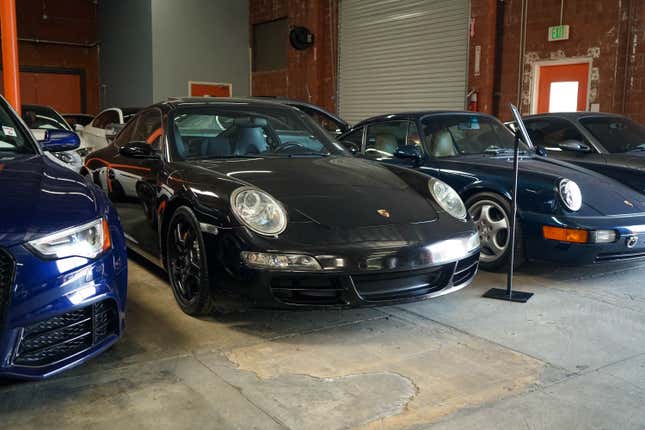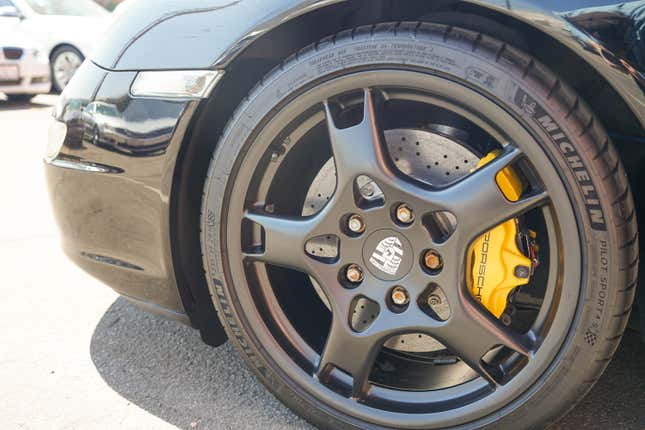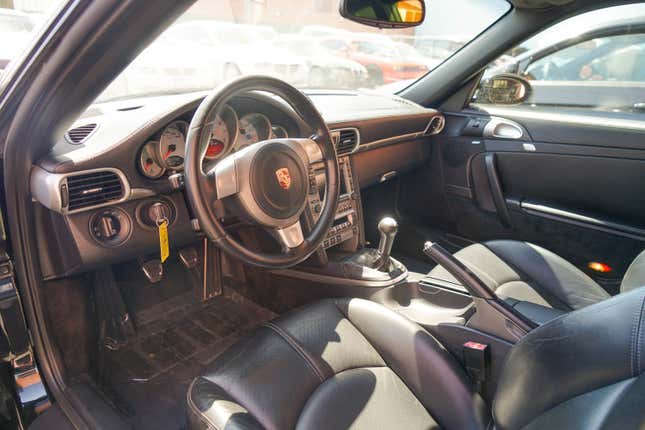Much like many of you, I’m sure, I like to lay in bed and doomscroll Twitter in the morning before I get up and make coffee. Most of the time, this just results in me sending @JortstheCat tweets to my wife and generally shitposting, but this morning was not like other mornings because I woke up to this tweet:
Yes, that’s a first-generation 997 Porsche Carrera S being sold 20 minutes away from me with over 300,000 miles, a single owner and a wild options list for just under $30,000. Understandably this turned my entire life upside down, and I started doing all that completely insane scheming to find a way to justify this purchase, just as I’m sure many of you would do, but then I got to thinking. What exactly do 300,000 miles do to a 997?
Porsche’s most legendary sports car is notoriously well-made and reliable (for the genre, anyway), and the 997 remedied many quality issues that were prevalent on the 996. Before you start typing furiously about IMS bearings, I know they were still an issue in early 997.1 models and were only completely rectified in the 997.2 generation with the introduction of the direct-injected 9A1 engine. Cool your jets. Anyway, I decided to call the dealership selling the car, MDK Global, to set an appointment to check it out and find out for myself.

After a short but pleasant drive — shoutout to the single-motor Polestar 2 that I’m in right now; keep an eye out for a review on that — I pull up to a nondescript brick building next to the Burbank airport and head inside, where I’m taken out to see the car.
The black-on-black car with (sadly) blacked-out lobster claw wheels shows its fair share of paint chips, swirls and light scratches, but frankly, after 17 years of hard use, it’s not bad. Even when the car is pulled out into the harsh and unforgiving Southern California mid-day summer sun, things with this lil guy don’t look too bad.
Inside things are a similar story. The interior looks and feels worn, but that’s to be expected. The auto-dimming rearview mirror has done the gross leaking thing that many owners of German cars from the early to mid-aughts will be all too familiar with. The buttons for the climate control are a little worn and a little gummy, but that’s par for the course with the 997, too. Ditto is a shifter that feels like it needs some new bushings and probably cables, but nothing here is thrashed or beyond saving.
As the dealer starts it up, the engine chugs a little before turning all the way over and settling into the classic raspy water-cooled 911 idle. The slow crank could be a bunch of things, but a starter replacement isn’t that gnarly on these cars if it ends up being that. The lights on the dash all wink out one by one, as you’d hope, and it’s time to get this thing on the road.

Full disclosure, I’m a 911 fanatic. It’s my favorite car and has been for a very long time. I’ve been around and worked around Porsches in general for years, and I’m lucky enough to have driven many generations of 911, both air-cooled and water-cooled, up to and including the new 992 GTS, but the 997 is always the sweet spot for me. It’s the right size, has wonderful steering, the interior is functional and well-made, and everything kind of just works. That can’t be the case after the equivalent of 12 trips around the planet, can it?
Actually, yeah, it can. The car feels like it was well-maintained for its life. The steering is still tight and direct, still perfectly weighted, too. The suspension feels good in normal mode, and the PASM button still works. The engine feels as strong as ever, and according to the dealer, this one got a full rebuild with IMS remediation (in the 997, this requires an engine teardown) around 50,000 miles ago. The first-generation Porsche Carbon Ceramic Brakes (PCCB) are strong and sort of wooden-feeling, but that’s how they’re supposed to be based on in-period reviews of the car. Modern ones are a lot better, but that’s to be expected.
The only real letdowns of the experience are that sloppy shifter, which is not uncommon in the 996 and 997 generations with their plastic-fantastic shift towers, weak shift cables and a stiff clutch pedal. Finding gears isn’t a problem, except for an occasional reluctance to go into first gear at a stop, and the whole thing would be fixed with a pair of new cables and a rebuild kit. The clutch is typical of a manual 911, even up to the current generation 7-speed cars, and just requires some getting used to.

Our test drive is short, but I think I’ve got an answer to my initial question of what 300,000 miles and 17 years do to a 911? How has it held up? And the answer is way, way better than you would think and much better than many of its contemporaries, I suspect.
Should you wipe carefully, flush, rush out of the bathroom (because let’s face it, that’s where you’re reading this), call your bank and book a plane ticket to Burbank to snatch this car up?
If you’ve been looking for a cheap, well-optioned 997 and you’re not afraid of doing a little work yourself — or shelling out a few grand to get it sorted at an independent shop — then yeah, actually, you should. It’ll never be a show car, but as something to rip around town in and have fun at the track, you’d be hard-pressed to find more car for the money.
H/t to journalist Chris Paukert (@cpautoscribe on Twitter) for finding this beast, and thanks to MDK Global for letting me come and poke around its collection of rad enthusiast cars.